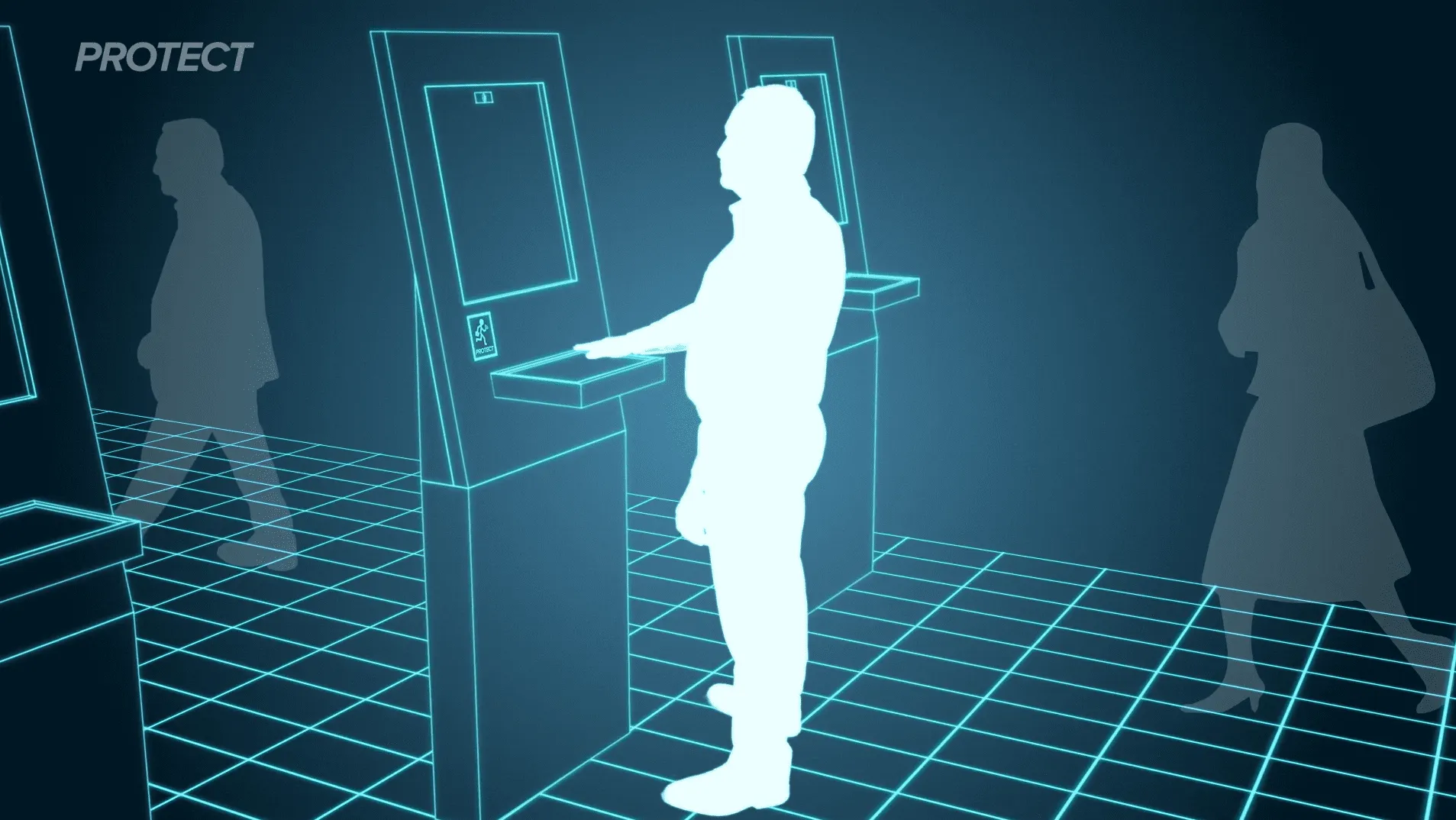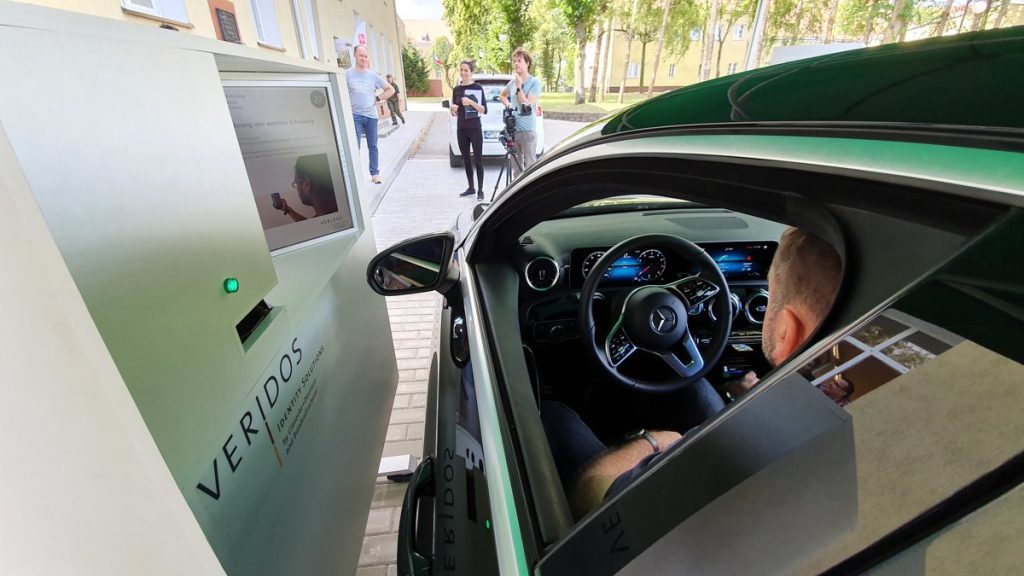VirTry: A virtual fitting room for glasses and headphones
PROTECT: Biometric border control improves security and eliminates queues

-
Client:
Project PROTECT
-
Technology:
Face tracking, face recognition
-
Use case:
Biometric border control
About the project
The number of travelers is rapidly growing, resulting in longer queuing times and more pressure on border authorities. PROTECT (Pervasive and User Focused Biometrics Border Project), an EU-funded H2020 security research project, tried to solve this problem using new biometric technologies that would digitalize and speed up border crossing. The main aim of PROTECT was to build an advanced biometric-based person identification system that would be user-centric and seamlessly operate across land, sea and air borders.
Biometric border control
PROTECT combines contactless biometrics including hand vein, voice and antropometrics to gather as much biometric data as possible. After the initial enrollment, people can cross borders with ease, by simply walking, looking into the screen and showing their face to the camera.
Project partners – University of Reading and Veridos – integrated visageSDK into the solution. Our technology was used for face detection, tracking, and recognition in order to provide an improved, less obtrusive approach to biometric data capture and verification.
The project covered two main use cases – cars and pedestrians.
At car border crossings, kiosks were used to verify passengers. First, each traveler verifies their identity via face or iris using their own smartphone. Hand vein is then scanned for each passenger at terminal alongside the car window.

PROTECT system demonstration in the Polish Border Guard Training Centre in Kętrzyn, Poland (Photo: PROTECT)
For pedestrians (in airports, train stations, etc.), a biometric corridor was built. The corridor is equipped with several cameras which capture anthropometric and face data on-the-move. By capturing the data from several angles and lighting conditions, identifiable data can be gathered non-obtrusively as pedestrians walk through the corridor.
In both cases, an overall risk score is calculated. Low-risk travelers can proceed, allowing border guards to concentrate on higher-risk travelers only.
This system increases the level of accuracy, security and privacy, while enabling fast, convenient, and non-intrusive border crossing for the travelers.